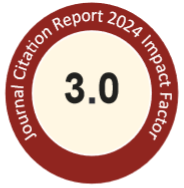Abstract
Over the past 10 years, Salmonella enterica serovar Enteritidis has emerged as a new serovar and a frequent cause of food-borne diseases in Taiwan. We used two molecular subtyping methods to investigate the development of the infections by S. enterica Enteritidis in Taiwan. Twenty-eight strains of S. enterica Enteritidis isolated from Taiwan during the period of 1992 to 1998 were collected. The primer pairs, MseI+C/EcoRI+0 and MseI+G/PstI+C, were used in amplified fragment length polymorphism (AFLP) analyses, and the restriction enzyme, AvrII, was used in pulsed-field gel electrophoresis (PFGE). Twenty-two AFLP profiles with 53-59 fragments in each profile were found by using the primer pair, MseI+G/PstI+C. In the PFGE analysis, 7 PFGE types were identified. Some of the collected strains, especially the imported strains, had closer relationships with the SE 02 strain isolated from Taipei County. As our results indicate, AFLP analysis was time-saving, easy to perform, and highly discriminative. In this study, AFLP and PFGE were used to analyze the S. enterica Enteritidis isolated from patients in Taiwan. These results provide the epidemiological distribution of these isolated strains and additional evidence to illustrate the sources of the food-borne pathogens.
Recommended Citation
Tsai, T.-Y.; Luo, W.-C.; Chen, K.-L.; and Pan, T.-M.
(2006)
"Molecular Subtyping of Salmonella enterica serovar Enteritidis isolated from Taiwan during 1992-1998 by amplified fragment length polymorphism and pulsed-field gel electrophoresis,"
Journal of Food and Drug Analysis: Vol. 14
:
Iss.
1
, Article 16.
Available at: https://doi.org/10.38212/2224-6614.2511

